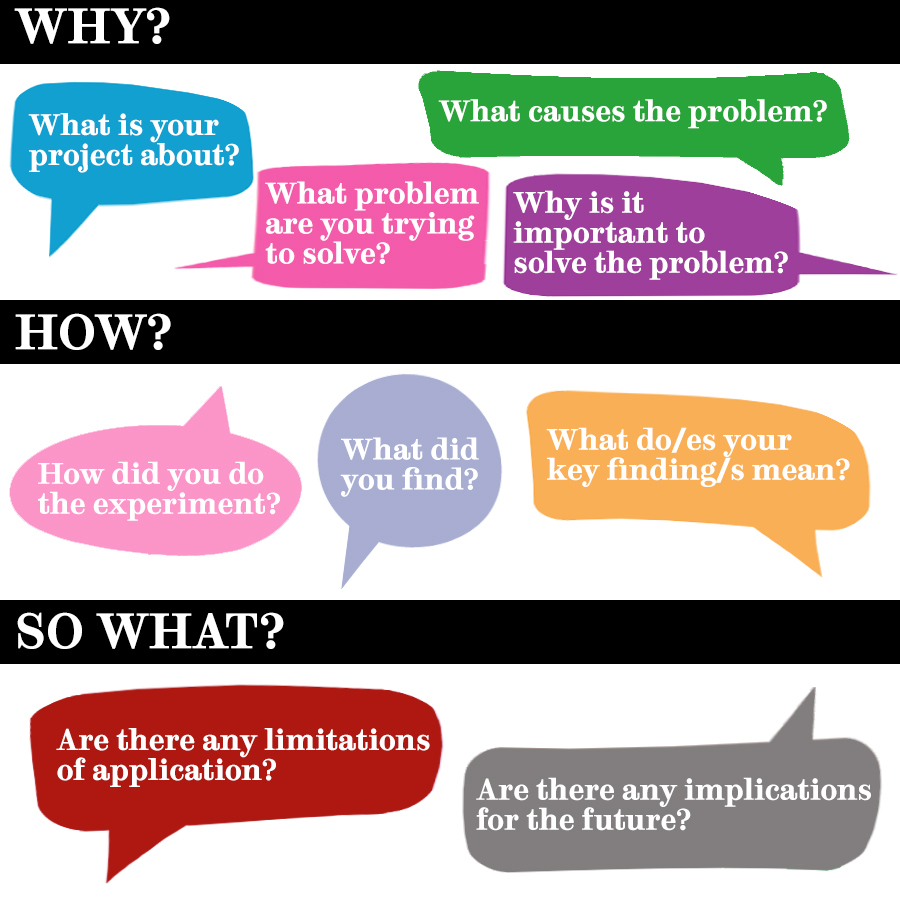
What is an abstract?
An Abstract is a summary of the whole technical report. It’s sometimes called the ‘Summary’ or the ‘Executive Summary’. It comes right at the beginning of a report, on its own page, and usually after the Title page. Because the Abstract is a summary of the whole report, it's also the last thing you will write.
What's an abstract for?
The Abstract tells the reader the main points about your technical project. Imagine the workplace - if someone is very busy, they may not have time to read the full report. They may also not have a technical background. The Abstract gives them an overview and can help them decide which specific sections to focus on. Plus, if the reader is looking for particular information, the Abstract tells them if the report includes that information or not.
Finally, if the reader is faced with a pile of reports, the Abstract helps them decide which ones to read.
This all saves the reader both time and effort.
Writing concisely
Effective Abstracts are concise, i.e. they should not include any unnecessary words. If you write a clear and informative Abstract, your report is more likely to be read. This is good for you, as your work will become known.
It's actually quite difficult to write concisely - people who are new to the task often find it a challenge to distill their entire report into a few sentences. With practice, though, you can develop this skill.
So how do I write an Abstract?
Your abstract should answer the following key questions:
- Why?
- How?
- So what?
This means you should focus on:
- The Problem (Why?)
- The Solution (How?)
- The Impact (So what?)
What should I include?
The Abstract should only include the 'headlines' of your report, i.e. key information about the following:
- Background of your project (why you did it / why the project was necessary)
- Aim(s) of your experiment/research/project (what you were specifically trying to do)
- What you actually did (your procedure or experimental method)
- What you found (your results)
- What your results mean (your conclusion)
- Any recommendations and/or special considerations for the future (implications)
- Any limits to how far your conclusions can be applied (limitations)
Abstracts often follow this order as it is the same order as the information in the main report.
‘Key’ information means the most important information. Depending on your project, 'implications' and 'limitations' may be optional. Your decision to include or exclude them depends on how important you think they are.
The Abstract should be self-contained, i.e. can be read and understood without needing to refer to other documents.
The Abstract should not include:
- Graphs or tables
- Pictures or equations
- Abbreviations, acronyms or jargon
How do I summarise my key information?
You can use questions to help you summarise each section of your report.
Imagine someone wants to know about your project and asks you questions about it.

Some examples of guiding questions
Answer each question aloud in one sentence - keep it simple! Once you have answered the question aloud, write your answer down (or type it in!).
Then, join your answers together into two or three sentences to create paragraphs.
How many paragraphs should I write?
Different companies and organisations can have different preferences but two or three paragraphs is common.
Paragraph 1: Why?
Join your answers to Questions 1-4 into a couple of sentences so they make sense.
Paragraph 2: How?
Join your answers to Questions 5-7 into two or three sentences so they make sense.
Paragraph 3: So what?
Join your answers to Questions 8 & 9 into a sentence so they make sense.